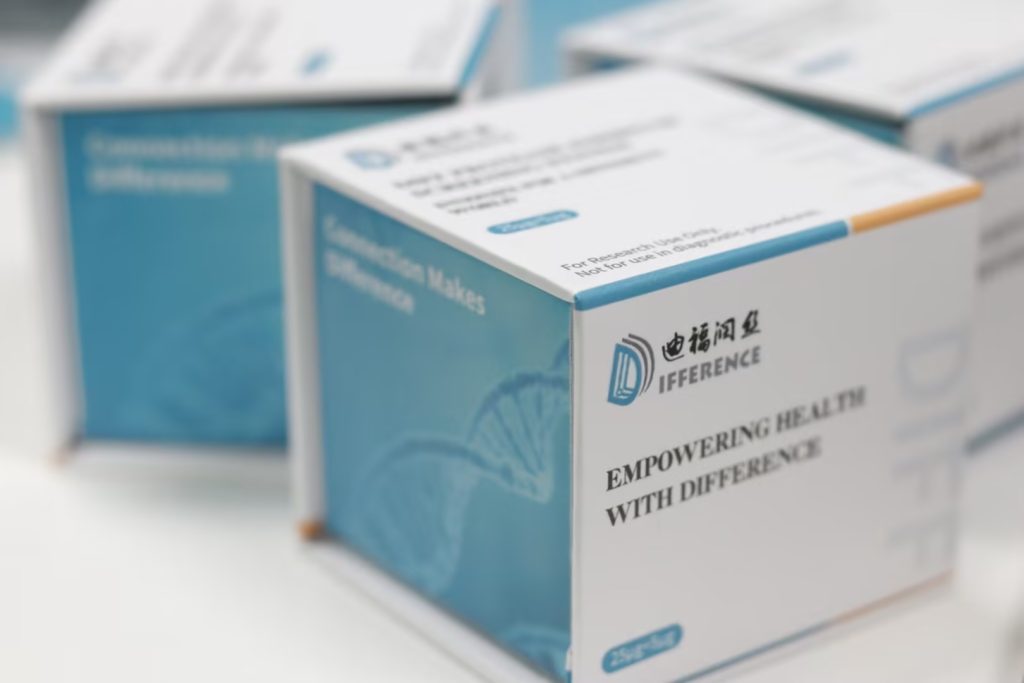Conducting protease inhibitor tests requires following a series of rigorous steps to ensure the accuracy and reliability of the experiment. The following is a general experimental process:
1、 Preparation before the experiment
Clarify the purpose of the experiment: Firstly, it is necessary to clarify the specific purpose of the experiment, such as verifying the inhibitory effect of a certain protease inhibitor, evaluating its selectivity for specific proteases, etc.
Choose inhibitors and proteases: Select appropriate protease inhibitors and proteases according to the experimental purpose. Inhibitors should have high specificity and be able to exert inhibitory effects on target proteases.
Prepare reagents and consumables: Prepare the required reagents (such as proteases, inhibitors, substrates, buffers, etc.) and consumables (such as pipettes, test tubes, centrifuge tubes, etc.), and ensure that all reagents are within their expiration date and of qualified quality.
Design experimental plan: Based on the experimental purpose and selected reagents, design a detailed experimental plan, including the setting of inhibitor concentration gradient, reaction time, temperature, pH value and other conditions.
2、 Experimental steps
Preparation solution: Prepare protease solution, inhibitor solution, and substrate solution of the required concentration according to the experimental protocol. Pay attention to maintaining aseptic operation during the preparation process to avoid contamination.
Pre experiment: Conduct a pre experiment before the formal experiment to verify the feasibility of the experimental plan and adjust the reaction conditions. Pre experiments can help determine the optimal inhibitor concentration, reaction time, and temperature conditions.
Formal experiment: Conduct formal experiments according to the experimental plan. Usually includes the following steps:
Grouping: Divide the experiment into a control group and an experimental group. The control group only added protease and substrate, while the experimental group added additional inhibitors.
Reaction: Mix the protease, inhibitor, and substrate evenly at the set temperature, pH value, and reaction time to begin the reaction. Pay attention to controlling the consistency of reaction conditions to ensure the reliability of experimental results.
Sampling and testing: Regularly take samples during the reaction process and use appropriate methods (such as colorimetry, fluorescence, etc.) to detect the amount of product generated or substrate consumed. Evaluate the inhibitory effect of inhibitors by comparing the detection results of the control group and the experimental group.
3、 Data analysis and result interpretation
Data organization: Organize the detected data and calculate statistical measures such as mean and standard deviation.
Data analysis: Use statistical methods to analyze the data and compare whether the differences between the control group and the experimental group are statistically significant.
Result interpretation: Based on the data analysis results, explain the inhibitory effect of the inhibitor and its possible mechanism of action. Pay attention to the sources of error and possible interference factors in the experiment to ensure the accuracy and reliability of the results.
4、 Precautions
Aseptic operation: Maintain aseptic operation throughout the entire experimental process to avoid the influence of microbial contamination on the test results.
Control variables: Strictly control variables other than inhibitors (such as temperature, pH value, reaction time, etc.) during the experiment to ensure the accuracy of the test results.
Repeated experiments: In order to improve the reliability of the test results, it is recommended to conduct multiple repeated experiments and take the average as the final result.
Safe operation: Pay attention to personal safety protection during the experiment, avoid contact and inhalation of harmful substances.
Through the above steps, a systematic protease inhibitor test can be conducted to evaluate the inhibitory effect of the inhibitor and provide scientific basis for its further application.
Share on:
Facebook
Twitter
Pinterest
WhatsApp
Recent posts
We recommend


